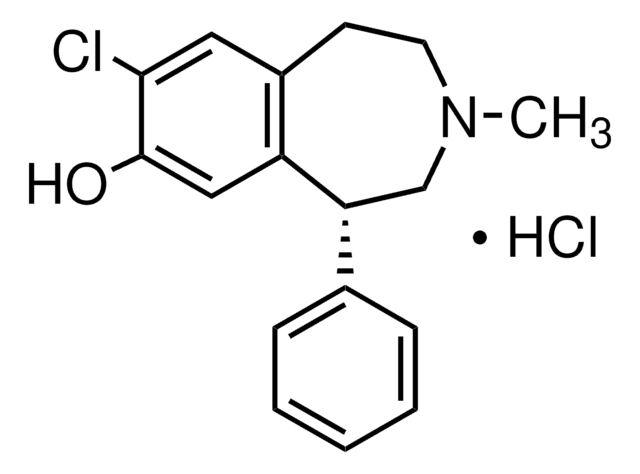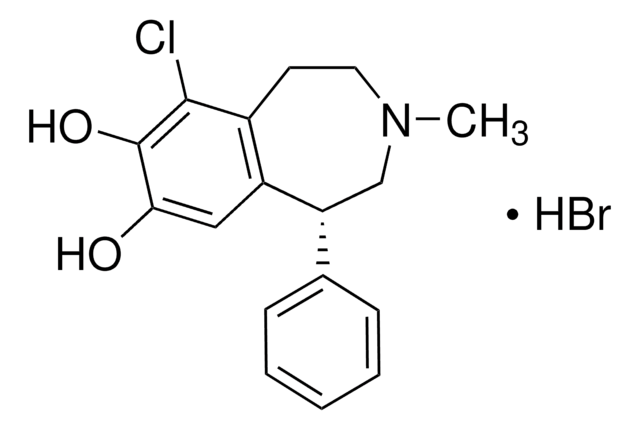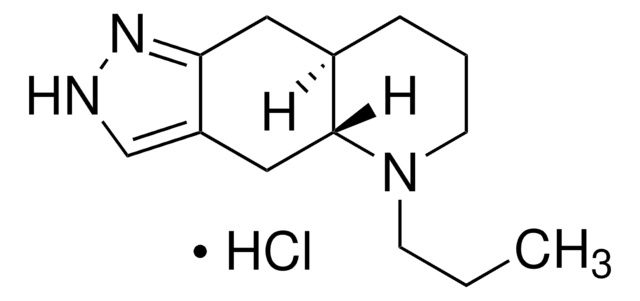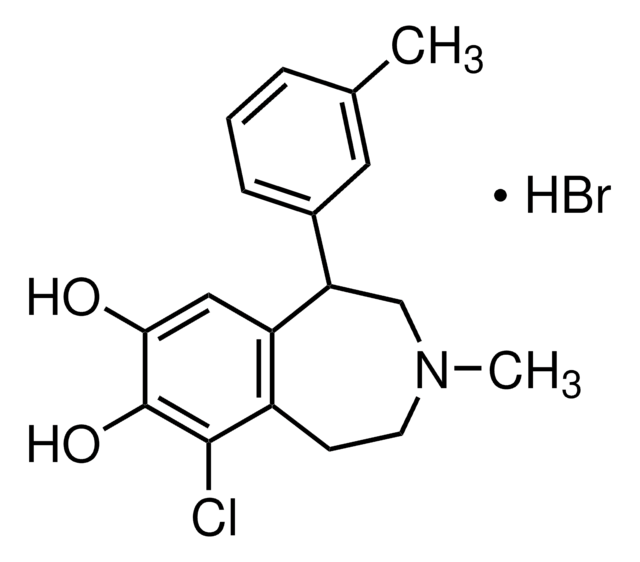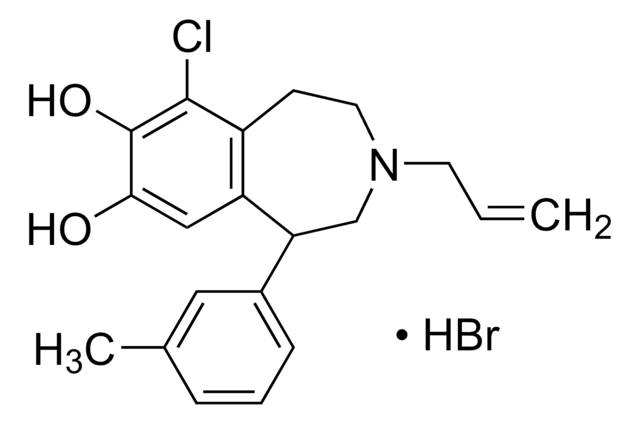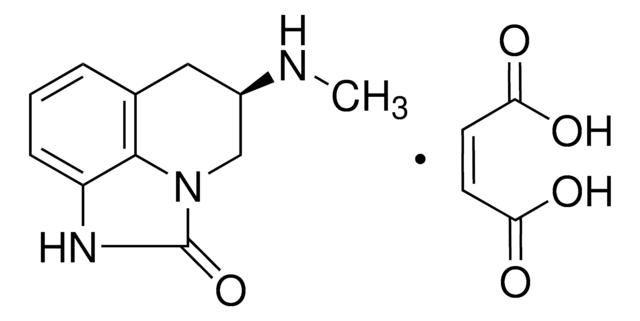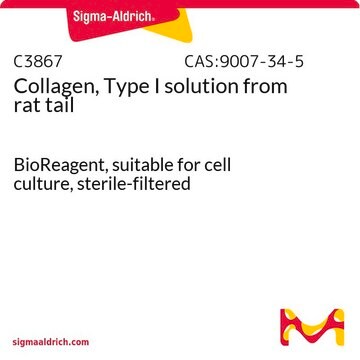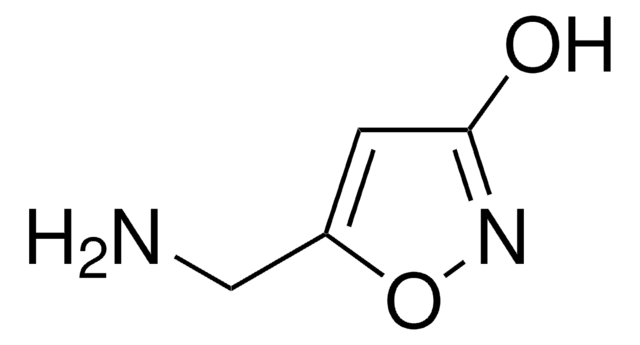Wichtige Dokumente
S179
R(+)-SKF-81297 hydrobromide
≥98% (HPLC), solid
Synonym(e):
R-(+)-6-Chloro-7,8-dihydroxy-1-phenyl-2,3,4,5-tetrahydro-1H-3-benzazepine hydrobromide
About This Item
Empfohlene Produkte
Assay
≥98% (HPLC)
Form
solid
Optische Aktivität
[α]22/D +15.14°, c = 0.52 in DMF(lit.)
Lagerbedingungen
desiccated
protect from light
Farbe
white to off-white
Löslichkeit
H2O: 6 mg/mL
DMSO: soluble
SMILES String
Br[H].Oc1cc2[C@H](CNCCc2c(Cl)c1O)c3ccccc3
InChI
1S/C16H16ClNO2.BrH/c17-15-11-6-7-18-9-13(10-4-2-1-3-5-10)12(11)8-14(19)16(15)20;/h1-5,8,13,18-20H,6-7,9H2;1H/t13-;/m1./s1
InChIKey
RMIJGBMRNYUZRG-BTQNPOSSSA-N
Anwendung
- to test it effect on the spike firing in rat retinal ganglion cells
- in human embryonic kidney (HEK) 293T cells
- to test its inhibitory effect in microglial cells
Biochem./physiol. Wirkung
Lagerklassenschlüssel
11 - Combustible Solids
WGK
WGK 3
Flammpunkt (°F)
Not applicable
Flammpunkt (°C)
Not applicable
Persönliche Schutzausrüstung
Eyeshields, Gloves, type N95 (US)
Hier finden Sie alle aktuellen Versionen:
Besitzen Sie dieses Produkt bereits?
In der Dokumentenbibliothek finden Sie die Dokumentation zu den Produkten, die Sie kürzlich erworben haben.
Kunden haben sich ebenfalls angesehen
Unser Team von Wissenschaftlern verfügt über Erfahrung in allen Forschungsbereichen einschließlich Life Science, Materialwissenschaften, chemischer Synthese, Chromatographie, Analytik und vielen mehr..
Setzen Sie sich mit dem technischen Dienst in Verbindung.